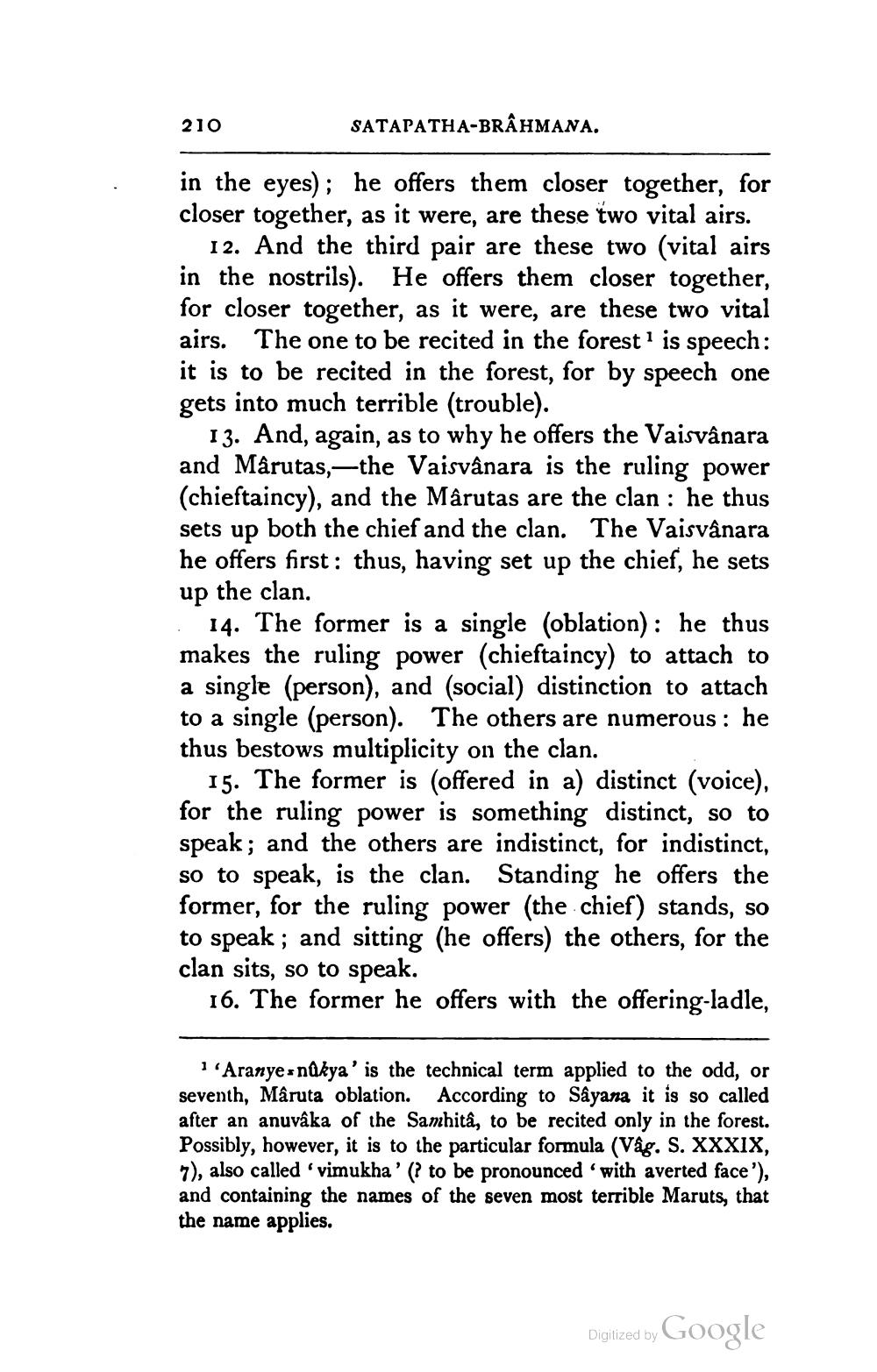________________
210
SATAPATHA-BRÂHMANA.
in the eyes); he offers them closer together, for closer together, as it were, are these two vital airs.
12. And the third pair are these two (vital airs in the nostrils). He offers them closer together, for closer together, as it were, are these two vital airs. The one to be recited in the forest 1 is speech: it is to be recited in the forest, for by speech one gets into much terrible (trouble).
13. And, again, as to why he offers the Vaisvânara and Mårutas,—the Vaisvânara is the ruling power (chieftaincy), and the Mârutas are the clan : he thus sets up both the chief and the clan. The Vaisvânara he offers first: thus, having set up the chief, he sets up the clan. : 14. The former is a single (oblation): he thus makes the ruling power (chieftaincy) to attach to a single (person), and (social) distinction to attach to a single (person). The others are numerous : he thus bestows multiplicity on the clan.
15. The former is offered in a) distinct (voice), for the ruling power is something distinct, so to speak; and the others are indistinct, for indistinct, so to speak, is the clan. Standing he offers the former, for the ruling power (the chief) stands, so to speak; and sitting (he offers) the others, for the clan sits, so to speak.
16. The former he offers with the offering-ladle,
1 Aranyes nükya' is the technical term applied to the odd, or seventh, Mâruta oblation. According to Sâyana it is so called after an anuvâka of the Samhita, to be recited only in the forest. Possibly, however, it is to the particular formula (Våg. S. XXXIX, 7), also called 'vimukha' ( to be pronounced with averted face), and containing the names of the seven most terrible Maruts, that the name applies.
Digitized by Google




